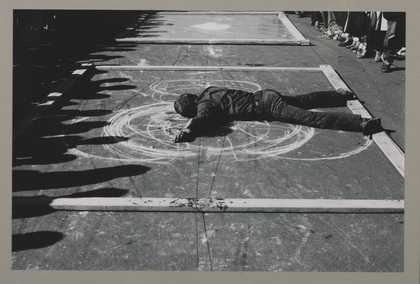
Stuart Brisley
Beneath Dignity (1977)
Tate
The popularity for art interventions emerged in the 1960s, when artists attempted to radically transform the role of the artist in society, and thereby society itself. They are most commonly associated with conceptual art and performance art.
The French filmmaker and writer Guy Debord, founder of situationism, wished to eliminate the spectator’s position. In 1960 he devised a raid on an international art conference in Belgium. Other collectives, like the Artist Placement Group (APG) in London attempted to reposition the role of the artist in a wider social and political context using art interventions. They acted outside the conventional gallery system, placing artists within industry and government departments in order to effect change. Such interventions served as a catalyst for artist-in-residence schemes and community programmes.
